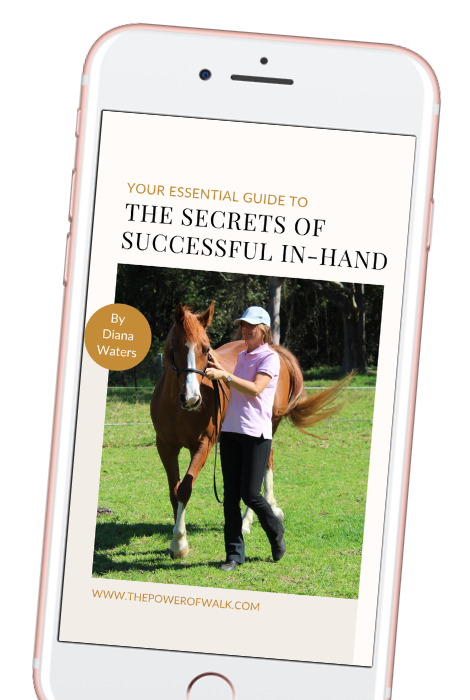
Should we Ditch Whips?
This week I’ve been thinking about the use of whips in our training. There is a certain argument for rejecting whips altogether. Even if we use them gently as an extension of the arm, there is always a potential to hurt the horse. Many horses have been hurt by whips in the past and consequently will have a tendency to be wary of them and their responses can be motivated by fear of pain even if the whip is no longer being used in this way.
In my experience, it is not always as clear cut as this. I tend to carry a whip when I am first working with a new horse, and phase out its use as our relationship grows. I am always monitoring the horse’s response and will drop the whip if it is causing any anxiety. However, in general, I find that a whip gives clarity in our communication at the start. It enables me to give a clear visual cue, or touch the horse's body without compromising my own posture by having to lean across. It can also be used to redirect the horse’s attention to parts of their body. I use it in a stroking motion up the horses side, or a smooth fluid arc as a visual cue to stop or start.
In the past, oneness has seemed like an elusive concept that only very talented horse people can intuitively achieve. However, it can actually be learned by anyone. The route to learning it for most of us is through synchronisation and clarity. So, firstly, meet the horse where they are at by moving with them and not trying to change them. Then once you are together, begin to ask for small changes with clear gentle aids followed by an immediate release.
The whip enables us to touch the horse gently and precisely and release immediately. This shared language is clear for both the human and the horse and builds confidence through this clarity. Because it is so clear, there is no need for nagging or doubt. As confidence grows, building oneness, both horse and human become calm, present and focused and the whip can be ditched.
The ultimate goal with slow walk work is oneness, and when we are in oneness, we do not need a whip. But a whip can be very helpful as a way to get there.
Removing tools of clear communication such as whips and bridles and relying on oneness from the get go can actually make both the horse and human feel anxious because if oneness has not been established the horse often does not understand what is being asked for. When there is confusion and lack of direction, oneness will not develop because of the anxiety this causes in both horse and human.
Some people address this through the use of a round pen and clicker training. Whilst I use clicker training for some things, I have found that when clicker training is used to try and establish expectations before the horse understands our communication, it can be counterproductive because if they don’t offer the right answer there is no clear guidance in the right direction and they can quickly start to become overwhelmed by spending too long in an uncertain state.
In the meantime, the human often feels demoralised because the energy and subtle aids are not being understood or responded to as they had hoped.
I recommend that people learn to read their horses and notice the response to the whip. If the horse’s body stays relaxed as you stroke them with the whip, they don’t run away from it and they stay focused then you can try using it. If you notice that your horse becomes more connected and responsive, then the whip is helping not hindering.
If your horse tenses their body against the whip or seems anxious when you hold one then you may decide it’s better not to use one, or you could spend some time building the horse's confidence around the whip until they feel differently.
I think the danger of a blanket rejection of whips based on a perceived problem is that this can overshadow the voice of the the horse because instead of trusting what we see in front of us in the moment, we are using our preconceived ideas to make a judgement without consulting the horse. If we rely on concepts like this, we diminish the ability for real connection and two way communication, including openness to treating each horse as an individual. We cannot protect our horses from harm by having blanket rules like “no whips”. The only way we can protect them from harm is by learning to read them in the moment and be prepared to think outside the box and challenge our preconceptions, and respond to what is in front of us.



